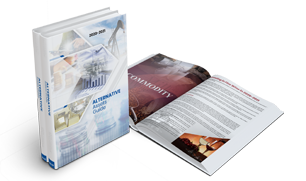
Never miss an important update |
Click to get notified about important updates only. |

99 Alternatives
Opportunities are Infinite
Capital outflow accompanies policy actions reflecting outward investment opportunities, financial integration, and increased liberalization.
It is studied by policymakers to identify drivers for the economy's financial crisis, growth factors, inflation, asset price, and exchange rates.
Since the global financial crisis, there has been much focus on gross capital inflows, outflow, and their sum.
Most countries need to manage their capital flows to benefit from the implementation of macroeconomic policies.
The government needs to implement time-structural reforms to build sound institutions that can withstand shocks and manage outflow safely.
Net capital outflows or NCOs – or the net foreign investment provides a difference between the acquisition of foreign assets by domestic residents and the acquisition of such assets by a foreign national.
This is related to saving the loanable fund and foreign currency exchange.
The relation between NCO and foreign exchange is used in an open economy.
Large unpredicted outflows can pose significant policy challenges even without a financial crisis.
Domestic vulnerabilities and international factors like global risk sentiments and liquidity sometimes drive such disruptive outflows.
Even a short crisis can lead to sudden large outflows, affecting the exchange rates, credit, interest rates, and output.
In the loanable fund market, all savers come to deposit their savings and saving correspond to everything the economy saves – in the private or government sector.
This is represented as national savings supplied to the market, while we have national investment and net capital outflow on the other side as demand. It is necessary to establish an equilibrium between the two.
If the economy runs a trade deficit, finance is gained by selling assets abroad.
In the European Union, one requires Euros to buy assets. If the resident buys overseas, they need to compare the exchange rate of Euros for the foreign currency.
The real exchange rate establishes the state of equilibrium as it corresponds to the relative price of domestic and foreign goods. NCO links both markets.
The NCO curve slopes downwards because of the increase in domestic real interest rates that makes the country's assets more attractive, and with higher foreign investment, the NCO reduces.
The government aims to create an equilibrium where import quotas are determined, making foreigners buy more Euros for EU net exports.
It is caused by political instability, where large quantities of assets leave the economy, and this can shift the NCO curve and the foreign currency exchange market, where the residents use the exchange to convert the local money into more secure alternative currencies, shifting the supply curve.
Real estate remains one of the most time-tested...
From liquifying your asset to any time you want to have...
Impact investing in real estate is a growing trend with...
Whether buying your first home or selling your...
What is better Silver or Sterling Silver? We all know...
How much do Twitch Streamers Make? Man is fun-loving...
Copyright © 2025 99alternatives Ltd. All rights reserved.
Designed and Managed by Mont Digital


